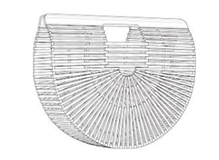In a matter of first impression, the US Court of Appeals for the Eleventh Circuit found that there may be no prevailing party for purposes of assessing costs and attorneys’ fees under Federal Rule of Civil Procedure 54(d). Royal Palm Properties, LLC v. Pink Palm Properties, LLC, Case No. 21-10872 (11th Cir. July 7, 2022) (Wilson, Rosenbaum, Covington, JJ.)
Royal Palm Properties sued Pink Palm Properties for trademark infringement. Pink Palm countersued, seeking cancellation of the trademark and a declaratory judgment of noninfringement. Following a three-day trial, the jury found that Pink Palm did not infringe the trademark and that the trademark was not invalid on the grounds asserted by Pink Palm. Pink Palm moved for judgment as a matter of law (JMOL), asking the court to overrule the jury’s determination that the trademark was valid. The district granted Pink Palm’s motion and invalidated the trademark. Pink Palm subsequently moved for costs, which the district court granted because Pink Palm was the prevailing party in light of the order granting JMOL. Royal Palm appealed.
The Eleventh Circuit reversed the district court’s grant of JMOL, reinstating the jury’s verdict and the trademark’s validity. In light of this reversal, the district court, on remand, ruled that Pink Palm was no longer the prevailing party for purposes of costs and was not entitled to an award of attorneys’ fees under the Lanham Act’s exception case doctrine. Pink Palm appealed.
Before addressing whether the district court erred by failing to name Pink Palm as the prevailing party, the Eleventh Circuit addressed the threshold question of whether courts are required to name a prevailing party in every case. The Court noted that while the Supreme Court of the United States has issued multiple opinions providing guidance on how to determine the prevailing party, it has not yet addressed whether there must be a prevailing party under Federal Rule of Civil Procedure 54.
Not finding any precedent in its own circuit, the Eleventh Circuit first looked to Federal Circuit precedent, which has stated that a district court must declare a prevailing party and that “punting is not an option.” The Court next explored holdings by the Eighth, Fifth and Second Circuits. Those courts have found that where the parties each brought unsuccessful claims and outcome did not materially alter the legal relationship between the parties, there is no prevailing party.
The Eleventh Circuit agreed with Eighth, Fifth and Second Circuit precedent and concluded that the text of Rule 54(d) does not allow for multiple prevailing parties, and there is not always a prevailing party in every case. A district court in the Eleventh Circuit may find (at most) one prevailing party, but it is not required to do so in every case. The Court found that both Royal Palm and Pink Palm had rebuffed the other’s claim regarding the trademark, leading to no material alteration in the legal relationship between the parties, and thus there was no prevailing party.
read more


 Subscribe
Subscribe



